Dome with smooth edges
-
Thanks for your help on this Gai.
We need to get Whaat to recognize the triangles at the top, and assign the UV coordinates differently.
Alternatively, you could start with a Geodesic Dome which uses the same size for all triangles. Would Whaat's plug-on work for Geodesic Domes?
Is there a plugin to create a Geodesic Dome.
We tried to solve this when we were trying to improve the O3D dome for viewing panoramic images (which has the same problem at the top and bottom), but we weren't able to do it properly.
-
2004 by Gavin Kistner- Geodesic_SketchUp.rb
don't remember where or when I got this, have you tried it?
john
-
Taffgoch serial domes is amazing



His PDF is a true gem!

-
Al, see the image I attached to that post. There is a yellow "cap" - just hiding the fact that we cannot properly UV Map that part.
Maybe half joke but at the same time, if you can find out something to put there, can be a workaround.
-
@gaieus said:
Al, see the image I attached to that post. There is a yellow "cap" - just hiding the fact that we cannot properly UV Map that part.
Maybe half joke but at the same time, if you can find out something to put there, can be a workaround.
This is as it would be in the 'real-world' - you'd have a special cap-stone or finial, simply because you can't use smaller and smaller tiles or stone to finish it - The builder WILL use a single 'thing'...

-
Certainly. Even the rest of the tiles mapped spherically is impossible.
-
I see my problem better now.
I don't want a texture mapping which gets smaller and smaller at the top. I want a texture mapping which is uniform over the entire dome - As if you placed an actual carpet on the dome.
To do this properly, I would probably need to make the dome out of hexagons, and have a "hexagon tileable" pattern to place on it.
I'm sure people must to this sometimes, but it is probably more difficult than I think.

-
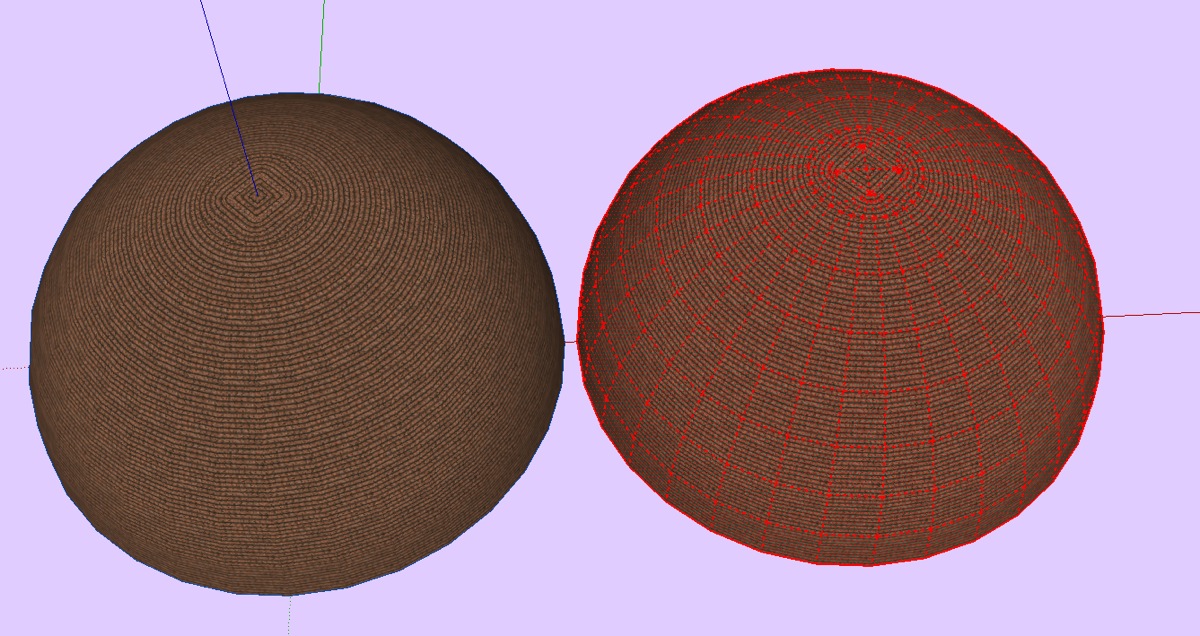
-
@unknownuser said:
I do this a lot , if that's what you mean
And just HOW do you do that?
 I believe that is what he means...
I believe that is what he means... -
@d12dozr said:
And just HOW do you do that?
 I believe that is what he means...
I believe that is what he means...probably the hard way,
I strip out the annular rings from one sphere, make a group, rotate copies until I like the pattern, explode the lot, slice off the top (3 or 4 rings), drape with sandbox, slice off the top of a plain old 'follow me' sphere (just 1 or 2 rings), offer up the sandbox hat (Gai was right, just a hat), decide how far to use the pattern, trim, explode, add projected material off a number of different angled surfaces I paint ( and make unique before projecting), decide what I like, purge all the test materials, and that's it...
I make these cages for pipe along path objects, and just thought I try draping and rendering one night,
foolishly I always bin the makings and have to start from scratch each time, but I'll keep this drawing and use it as a component, nearly everything is grouped so have a play.
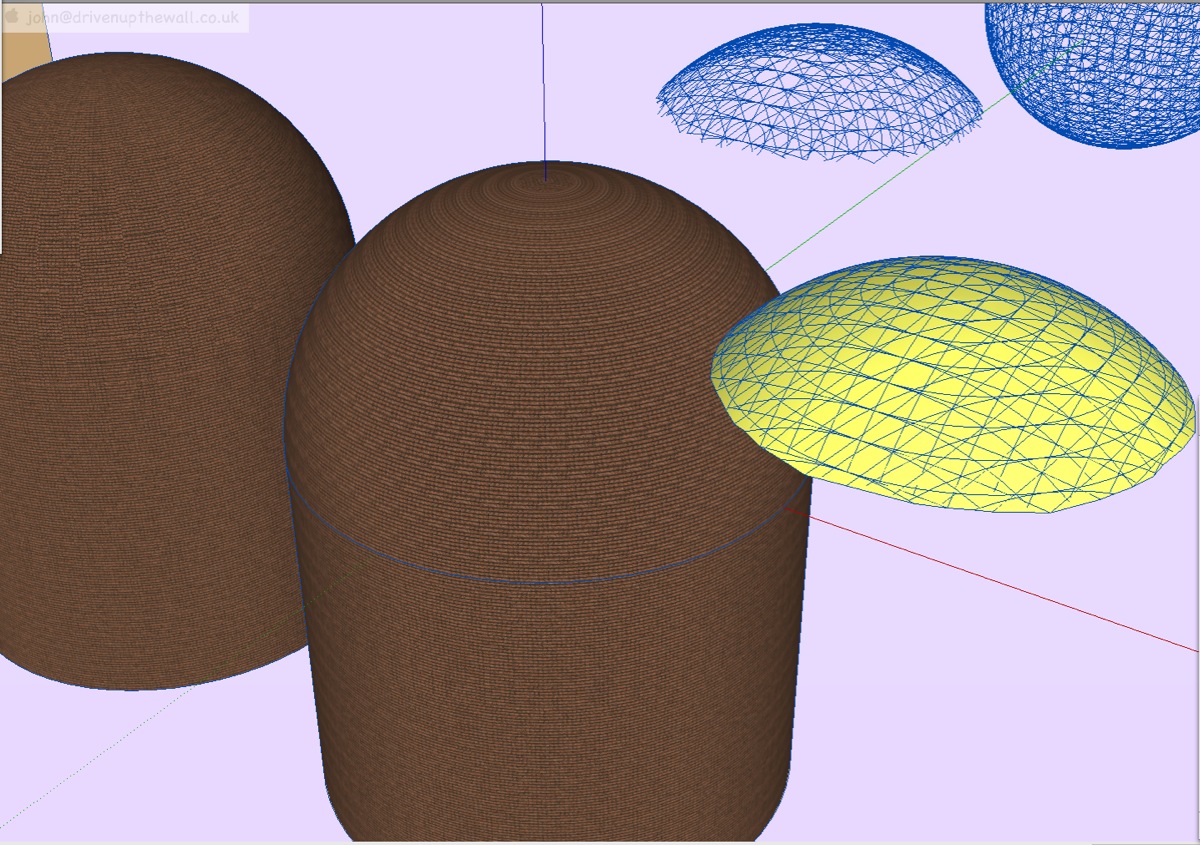
You only need to change the top 1 or 2 rings to completely change how the texture gets projected, but I have no idea why.
On this one I also copy pasted the cylinder off the standard one because the texture worked better on that one, again no idea why.john
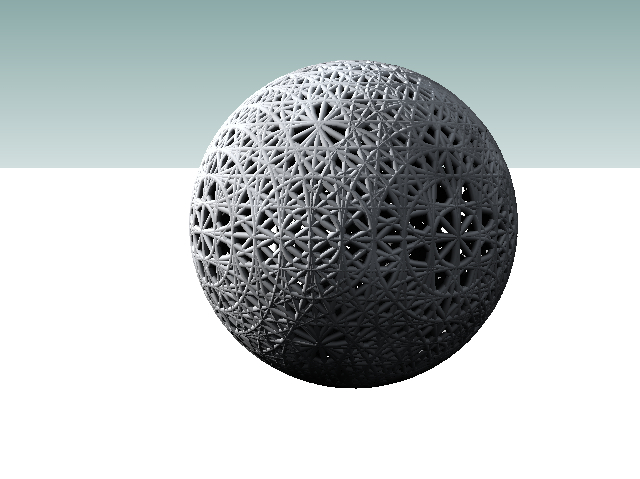
-
Thank you for the detailed explanation.
-
@d12dozr said:
Thank you for the detailed explanation.
no problem, don't know if it helps Al (I know next to nothing about UV mapping, but I just saw this sitting on the desktop and may as well add it

-
I finally found geodesic_sketchup.rb script on
It created a spehere with even triangles, so the material does not bunch up at the top or bottom. Now I just need to find a pattern which is tileable in a triangular pattern. (I turned on the hidden lines here so you could see the actual triangles which form the sphere)
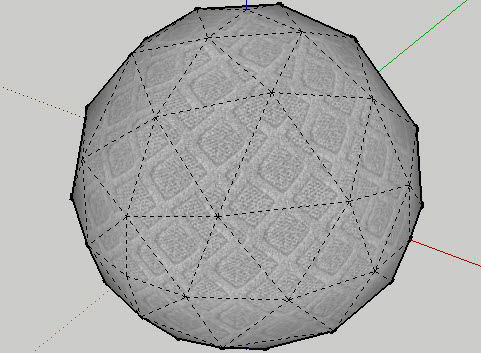
Here's what I was trying to get - a sphere which would take a bumpy pattern, and spread it out well.
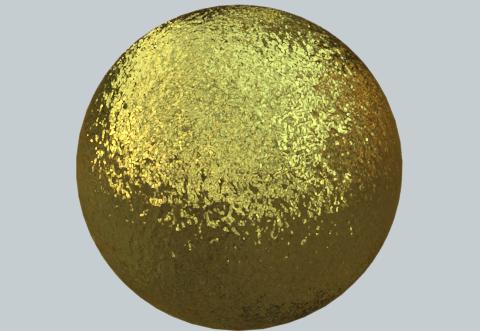
-
Hello, all,
I've been "lurking" on this discussion, and see that Al has posted an image of Simon Thomas' sculpture, "Orb"...

As Gaieus mentioned, it is, indeed, based on a geodesic sphere (class-I, frequency-2, if you're familiar with the terminology.)
Several other of Thomas' sculptures are compelling, and would make for interesting SketchUp exercises.
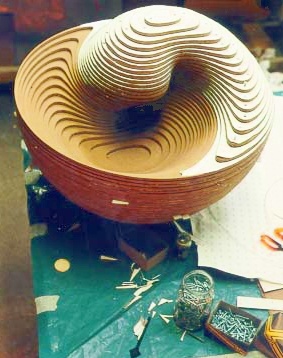
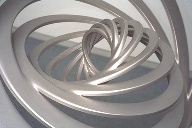
See here, for descriptions: The art of numbers
For geodesic design in SketchUp, I often use an online java applet that can output a text file of the x,y,z coordinates for each vertex, which I then import into SketchUp, as a "point cloud"...
Thomson Problem...just another (powerful) geodesic resource, should you be looking for such.
Taff
-

http://www.georgehart.com/rp/rp.htmlYou might try skinning one of the models on this site, well worth a visit in any case
john
-
I added a dome and sphere to RpTools using Gavin Kistner's Geodesic class.
This should make it much easier for me to create smooth domes and sphere when I need one.
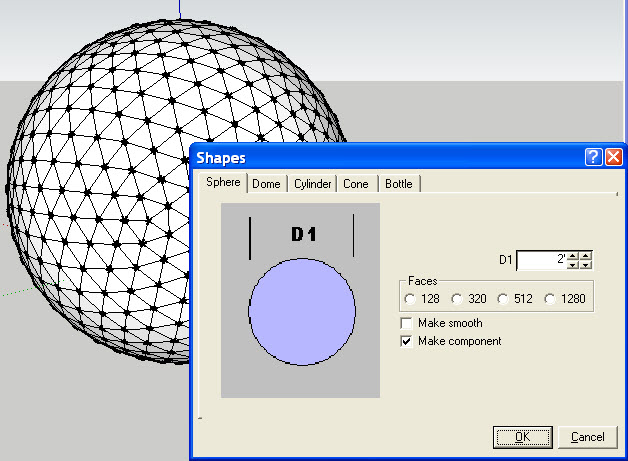
-
Thanks for everyone's help on this issue.
What this was all about, is that I wanted to show the effect of using a 360 Panaromic HDRi image as background for rendering, and a smooth dome makes it easier to see how the HDRI is reflected. I wanted a good tool to make a quick, smooth dome - especially for reflection examples.
The image below uses a Free HDRi provided by Bryan James. He made a 360 photo of the interior of St. John's Cathedral in NYC. The Sketch Up model is a reflective ground plane, and a reflective dome.
Everything else is generated using the HDRi for lighting, shadows, background and reflection.

Advertisement








